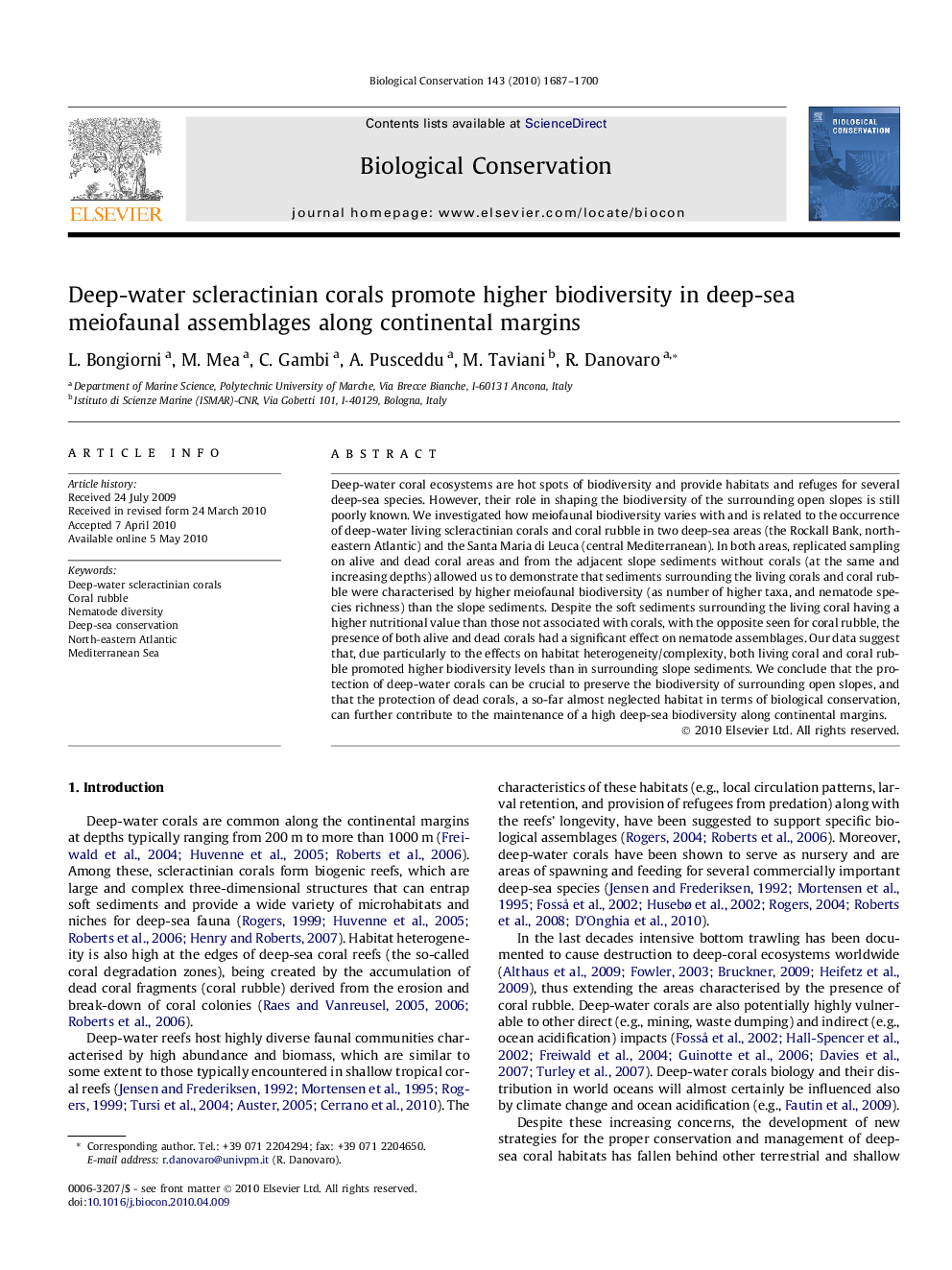| Article ID | Journal | Published Year | Pages | File Type |
|---|---|---|---|---|
| 4386150 | Biological Conservation | 2010 | 14 Pages |
Deep-water coral ecosystems are hot spots of biodiversity and provide habitats and refuges for several deep-sea species. However, their role in shaping the biodiversity of the surrounding open slopes is still poorly known. We investigated how meiofaunal biodiversity varies with and is related to the occurrence of deep-water living scleractinian corals and coral rubble in two deep-sea areas (the Rockall Bank, north-eastern Atlantic) and the Santa Maria di Leuca (central Mediterranean). In both areas, replicated sampling on alive and dead coral areas and from the adjacent slope sediments without corals (at the same and increasing depths) allowed us to demonstrate that sediments surrounding the living corals and coral rubble were characterised by higher meiofaunal biodiversity (as number of higher taxa, and nematode species richness) than the slope sediments. Despite the soft sediments surrounding the living coral having a higher nutritional value than those not associated with corals, with the opposite seen for coral rubble, the presence of both alive and dead corals had a significant effect on nematode assemblages. Our data suggest that, due particularly to the effects on habitat heterogeneity/complexity, both living coral and coral rubble promoted higher biodiversity levels than in surrounding slope sediments. We conclude that the protection of deep-water corals can be crucial to preserve the biodiversity of surrounding open slopes, and that the protection of dead corals, a so-far almost neglected habitat in terms of biological conservation, can further contribute to the maintenance of a high deep-sea biodiversity along continental margins.
